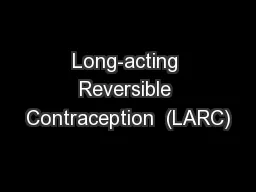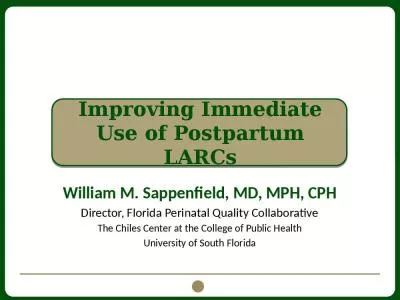PPT-Long-Acting Reversible Contraceptives (LARC) --
Author : pamella-moone | Published Date : 2019-02-04
Beyond the Myth More Than Just Uterus Shanda R Dorff MD FAAFP MN AAP Hot Topics Conference Friday May 12 2017 Disclosure I have zero actual or potential conflicts
Presentation Embed Code
Download Presentation
Download Presentation The PPT/PDF document "Long-Acting Reversible Contraceptives (L..." is the property of its rightful owner. Permission is granted to download and print the materials on this website for personal, non-commercial use only, and to display it on your personal computer provided you do not modify the materials and that you retain all copyright notices contained in the materials. By downloading content from our website, you accept the terms of this agreement.
Long-Acting Reversible Contraceptives (LARC) --: Transcript
Download Rules Of Document
"Long-Acting Reversible Contraceptives (LARC) --"The content belongs to its owner. You may download and print it for personal use, without modification, and keep all copyright notices. By downloading, you agree to these terms.
Related Documents














